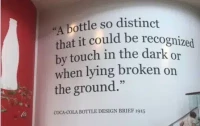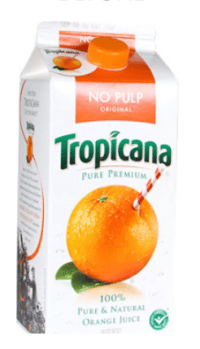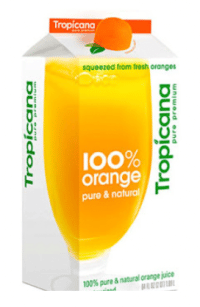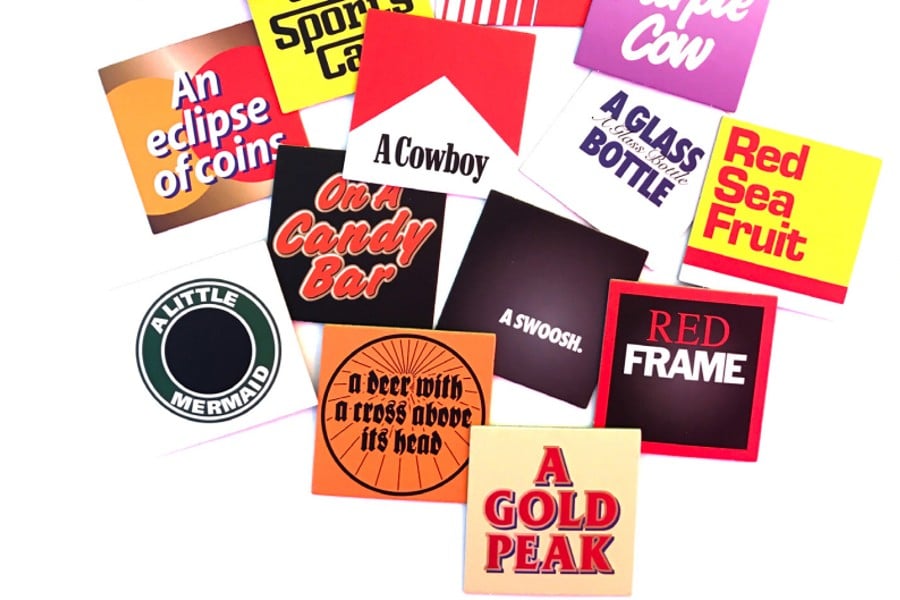First, what the hell are brand codes?
Brand Codes (also known as “Distinctive Brand Assets”) are elements that trigger the memory of a brand along with its attributes and associations.
 They are cues of a brand that include colors, logos, icons, jingles, characters, packaging, or brandable chunks.
They are cues of a brand that include colors, logos, icons, jingles, characters, packaging, or brandable chunks.
Examples include Coke’s bottle shape, McDonald’s “I’m Loving It” jingle, or Kentucky Fried Chicken’s Colonel.
Brand Codes are important for a few reasons:
1. They Distinguish Your Brand from Competitors
Branding aims to de-commodify you from the market — to ensure you stand out.
In the past, this has been conflated with claiming to be not just uniquely you, but uniquely better — hence the concept of the USP.
But recent research has shown that it’s often enough to simply be distinct from everyone else in your category without an explicitly made Unique Selling Proposition.
2. They Strengthen Memory Structures and Increase “Mental Availability”
Does the smell of a particular brand of cologne or perfume remind you of a significant other or past relationship?
Or perhaps there’s a particular restaurant or song or drink that sparks your memory of that person?
The point is that the more such cues you have that remind you of that person or relationship, the stronger that overall memory of that person will be, and the more readily they’ll come to mind.
It’s the same with Brand Codes. The more cues that bring to mind the brand, the stronger the memory structures that contribute to “share of mind.”
And this is especially the case when those Brand Codes are used consistently and aggressively.
3. They Allow Savvy Marketers to Playfully Engage Customer Expectations
Once a Brand Code has been established, smart marketers can alter and play with the codes to increase audience engagement.
Absolut Vodka’s famed print ads are a prime example of this.
But Snickers has taken advantage of this technique as well.
Tropicana’s $65 Million Rebranding Mistake
So what do brand codes have to do with Tropicana’s rebranding debacle?
 Well, take a look at Tropicana’s old (and now current) packaging:
Well, take a look at Tropicana’s old (and now current) packaging:
Keep in mind that Tropicana was one of the first brands to introduce a “not from concentrate” orange juice into the mainstream.
And to huge success.
But once a customer has decided that this is their orange juice (in whatever version of pulpiness they prefer), then they typically scan for and buy it on auto-pilot.
They look for the familiar, with an emphasis on the primary Brand Codes.
In this case, those are the iconography of the orange with a straw stuck it, and the curved Tropicana logo.
These are valuable (and distinctive) brand assets.
So any re-design of the packaging should have taken that into account by ensuring that these Brand Codes were carried over into the new design.
Unfortunately for Tropicana, the ad agency they paid $35 Million to for their rebrand (Arnell) utterly failed to take any of that into account.
 Instead, Arnell came up with new packaging that looked like this:
Instead, Arnell came up with new packaging that looked like this:
Notice what’s missing from the package?
Answer: Tropicana’s Brand Codes.
Specifically:
- The orange with a straw stuck into it, and
- the Curved Tropicana Name / Logo
So what happened?
In the two months following the launch of the new packaging in January of 2009, Tropicana sales dropped 20%, resulting in $30 million loss in revenue.
Tropicana’s competitors gained in sales over that same time period.
The company reverted to their old packaging by late February of 2009.
All told, the company was out $35 million for the rebrand, plus another $30 million in lost sales.
The Take-Away For Your Brand
So here are the lessons:
- Brand Codes are important
- Play with — but never abandon — your Brand Codes
- If customers buy your brand on auto-pilot, don’t force them to think
- Be careful who you hire to build (or relaunch) your brand
- Are You Paying for Too Much for the Wrong Keywords? - July 15, 2024
- Dominate Your Market Like Rolex — 4 Powerful Branding Lessons - July 3, 2024
- Military-Grade Persuasion for Your Branding - June 25, 2024

